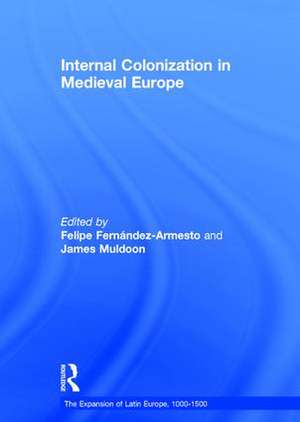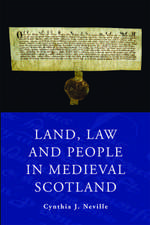Internal Colonization in Medieval Europe: The Expansion of Latin Europe, 1000-1500
Autor Felipe Fernandez-Armesto, James Muldoonen Limba Engleză Hardback – 22 dec 2008
Preț: 1218.96 lei
Preț vechi: 1673.52 lei
-27% Nou
Puncte Express: 1828
Preț estimativ în valută:
233.25€ • 254.16$ • 196.55£
233.25€ • 254.16$ • 196.55£
Carte tipărită la comandă
Livrare economică 23 aprilie-07 mai
Preluare comenzi: 021 569.72.76
Specificații
ISBN-13: 9780754659723
ISBN-10: 0754659720
Pagini: 410
Dimensiuni: 174 x 246 mm
Greutate: 0.98 kg
Ediția:1
Editura: Taylor & Francis
Colecția Routledge
Seria The Expansion of Latin Europe, 1000-1500
Locul publicării:Oxford, United Kingdom
ISBN-10: 0754659720
Pagini: 410
Dimensiuni: 174 x 246 mm
Greutate: 0.98 kg
Ediția:1
Editura: Taylor & Francis
Colecția Routledge
Seria The Expansion of Latin Europe, 1000-1500
Locul publicării:Oxford, United Kingdom
Cuprins
Contents: Introduction. Part 1 The Matrix: Mentality and Demography: The ascent of Latin Europe, Karl Leyser; On the evidence of growth of population in the West from the 11th to the 13th century, Léopold Génicot; The 'feudal' economy and capitalism: words, ideas and reality, Jacques Heers; Cultural climates and technological advance in the Middle Ages, Lynn White Jr. Part 2 Infrastructure and Ecology: Economic development and aquatic ecosystems in medieval Europe, Richard C. Hoffmann; The extent of the English forest in the 13th century, Margaret Ley Bazeley; The evolution of land transport in the Middle Ages, R.S. Lopez; A day's journey in medieval France, Marjorie Nice Boyer; The Cistercian order and the settlement of Northern England, R.A. Donkin. Part 3 The Rural Economy: The chronology of labour services, M. Postan; An Italian estate, 900-1200, P.J. Jones; Lords and peasants: a reappraisal of medieval economic relationships, M. Toch; An industrial revolution of the 13th century, E.M. Carus-Wilson. Part 4 Urban and Commercial Expansion: Urban evolution during the early Middle Ages, M. Lombard; Settlement patterns, urban functions and capital formation in medieval Flanders, D. Nicholas; Index.
Notă biografică
Felipe Fernández-Armesto is Professor of History at Tufts University, USA and James Muldoon is Professor Emeritus, Rutgers University, and Invited Research Scholar at The John Carter Brown Library at Brown University, USA.
Descriere
Around the year 1000 Rodulfus Glaber described France as being in the throes of a building boom. In the articles gathered here distinguished medieval historians discuss the ways in which this transformation took place. European society was becoming more stable, the climate was improving, and the population increasing so that it was necessary to increase food production. These circumstances in turn led to the cutting down of forests, the draining of wetlands, and the creation of pastures on higher elevations from which the glaciers had retreated. New towns were established to serve as economic and administrative centers. These developments were witness to the processes of internal colonization that helped create medieval Europe.





















